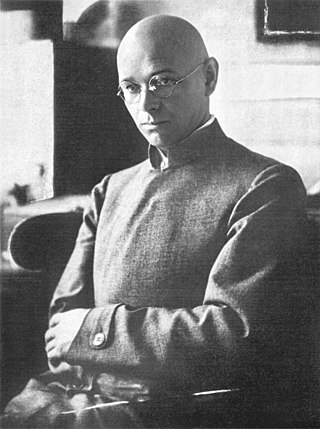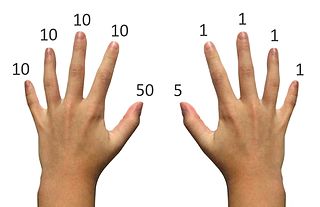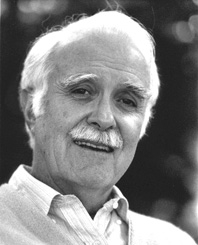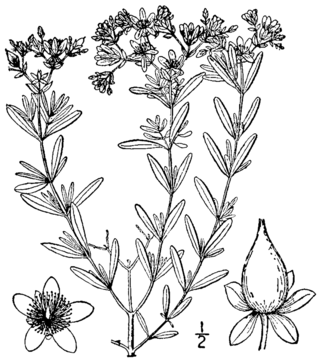
Adnation in angiosperms is the fusion of two or more whorls of a flower, e.g. stamens to petals". [1] This is in contrast to connation, the fusion among a single whorl. [2] [3]


Adnation in angiosperms is the fusion of two or more whorls of a flower, e.g. stamens to petals". [1] This is in contrast to connation, the fusion among a single whorl. [2] [3]


In naval architecture, a poop deck is a deck that forms the roof of a cabin built in the rear, or "aft", part of the superstructure of a ship.

The stamen is the pollen-producing reproductive organ of a flower. Collectively the stamens form the androecium.

Johannes Itten was a Swiss expressionist painter, designer, teacher, writer and theorist associated with the Bauhaus school. Together with German-American painter Lyonel Feininger and German sculptor Gerhard Marcks, under the direction of German architect Walter Gropius, Itten was part of the core of the Weimar Bauhaus.
In genetic algorithms and evolutionary computation, crossover, also called recombination, is a genetic operator used to combine the genetic information of two parents to generate new offspring. It is one way to stochastically generate new solutions from an existing population, and is analogous to the crossover that happens during sexual reproduction in biology. Solutions can also be generated by cloning an existing solution, which is analogous to asexual reproduction. Newly generated solutions may be mutated before being added to the population.

Aridity is the condition of a region that severely lacks available water, to the extent of hindering or preventing the growth and development of plant and animal life. Regions with arid climates tend to lack vegetation and are called xeric or desertic. Most arid climates are located in the subtropics; these regions include parts of Africa, Asia, South America, North America, and Australia.
The discovery of cosmic microwave background radiation constitutes a major development in modern physical cosmology. In 1964, US physicist Arno Allan Penzias and radio-astronomer Robert Woodrow Wilson discovered the cosmic microwave background (CMB), estimating its temperature as 3.5 K, as they experimented with the Holmdel Horn Antenna. The new measurements were accepted as important evidence for a hot early Universe and as evidence against the rival steady state theory as theoretical work around 1950 showed the need for a CMB for consistency with the simplest relativistic universe models. In 1978, Penzias and Wilson were awarded the Nobel Prize for Physics for their joint measurement. There had been a prior measurement of the cosmic background radiation (CMB) by Andrew McKellar in 1941 at an effective temperature of 2.3 K using CN stellar absorption lines observed by W. S. Adams. Although no reference to the CMB is made by McKellar, it was not until much later after the Penzias and Wilson measurements that the significance of this measurement was understood.

Coping is the capping or covering of a wall. A splayed or wedge coping is one that slopes in a single direction; a saddle coping slopes to either side of a central high point.

Chisanbop or chisenbop, sometimes called Fingermath, is a finger counting method used to perform basic mathematical operations. According to The Complete Book of Chisanbop by Hang Young Pai, chisanbop was created in the 1940s in Korea by Sung Jin Pai and revised by his son Hang Young Pai, who brought the system to the United States in 1977.
Van Nostrand's Scientific Encyclopedia is an encyclopedia published in the United States. Currently in a three volume 10th edition, it was published in two volumes for editions 6 to 9. The 8th edition is available as two CD ROMs.

A portal is an opening in a wall of a building, gate or fortification, especially a grand entrance to an important structure.

John William Atkinson, also known as Jack Atkinson, was an American psychologist who pioneered the scientific study of human motivation, achievement and behavior. He was a World War II veteran, teacher, scholar, and long term member of the University of Michigan community.

The Battle of Bellevue on 7 October 1870 was fought during the Franco-Prussian War and ended in a Prussian victory.
Francis D. K. "Frank" Ching is an architecture and design graphics writer. He is Professor Emeritus at the University of Washington.
Molecular Spectra and Molecular Structure IV. Constants of Diatomic Molecules, by K. P. Huber and Gerhard Herzberg, is a classic comprehensive multidisciplinary reference text contains a critical compilation of available data for all diatomic molecules and ions known at the time of publication - over 900 diatomic species in all - including electronic energies, vibrational and rotational constants, and observed transitions. Extensive footnotes discuss the reliability of these data and additional detailed informationon potential energy curves, spin-coupling constants, /\-type doubling, perturbations between electronic states, hyperfine structure, rotational g factors, dipole moments, radiative lifetimes, oscillator strengths, dissociation energies and ionization potentials when available, and other aspects. Herzberg received the 1971 Nobel Prize in Chemistry; both authors are world-renowned highly respected scientists.

The Battle of Chingleput was a short siege in early 1752, during the Second Carnatic War. About 700 East India Company recruits and sepoys under the command of Robert Clive captured the fortress of Chingleput, near Madras, defended by a French East India Company garrison of about 40 Europeans and 500 troops.

A leaf gap is a space in the stem of a plant through which the leaf grows. The leaf is connected to the stem by the leaf trace, which grows through the leaf gap.

Connation in plants is the developmental fusion of organs of the same type, for example, petals to one another to form a tubular corolla. This is in contrast to adnation, the fusion of dissimilar organs. Such organs are described as connate or adnate, respectively. When like organs that are usually well separated are placed next to each other, but not actually connected, they are described as connivent.
Harold Kerzner is an American engineer, management consultant, Emeritus Professor of Systems Management at Baldwin Wallace University, and Sr. Executive Director for Project Management at the International Institute for Learning, known for his work in the field of project management.
Faber Birren was an American writer and consultant on color and color theory.

Hypericum densiflorum, also known as bushy St. John's wort or dense St. John's wort, is a perennial herb in the flowering plant family Hypericaceae native to North America. The specific epithet densiflorum is Latin, meaning "densely flowered", referring to the many-flowered cymes.